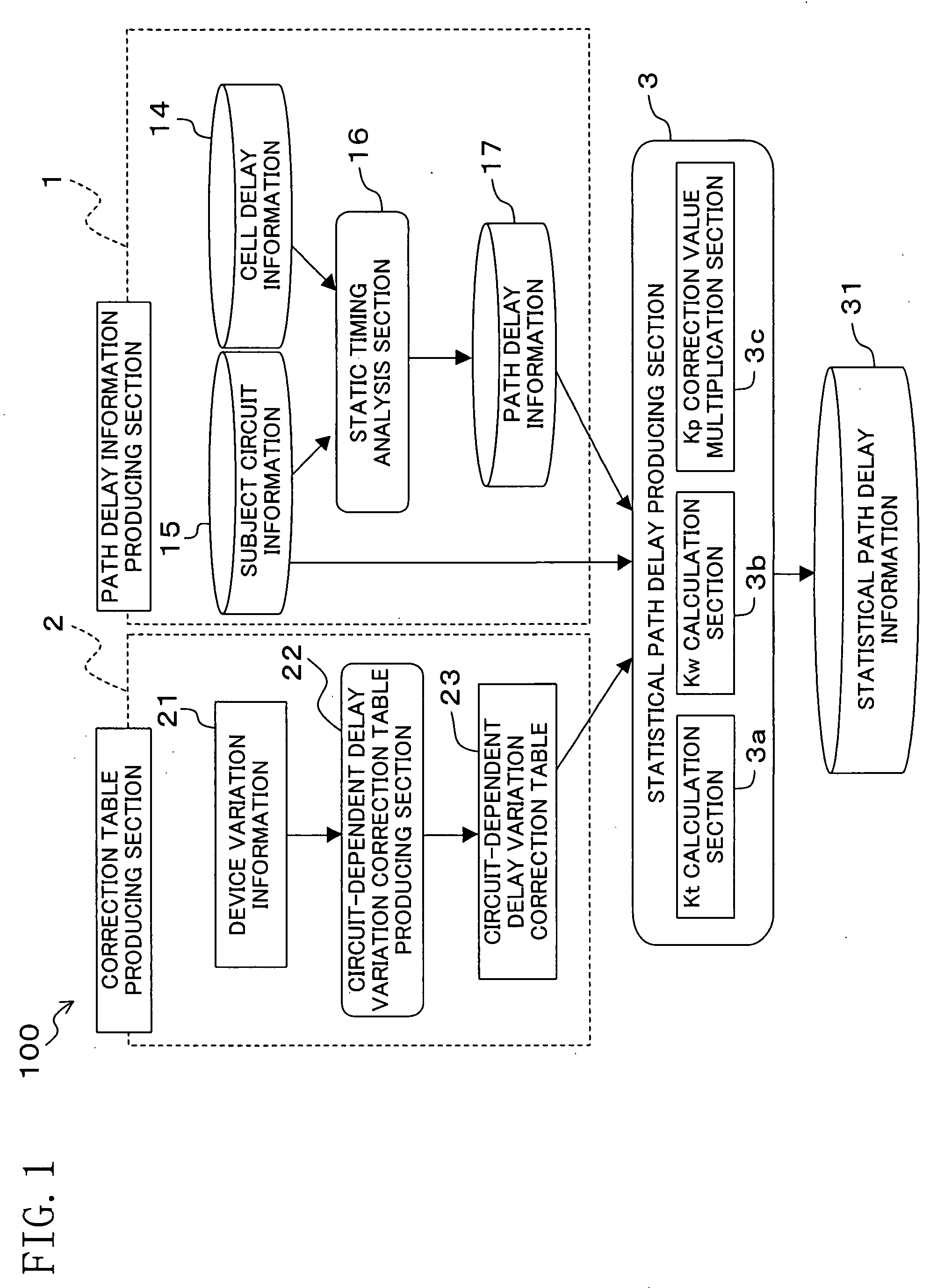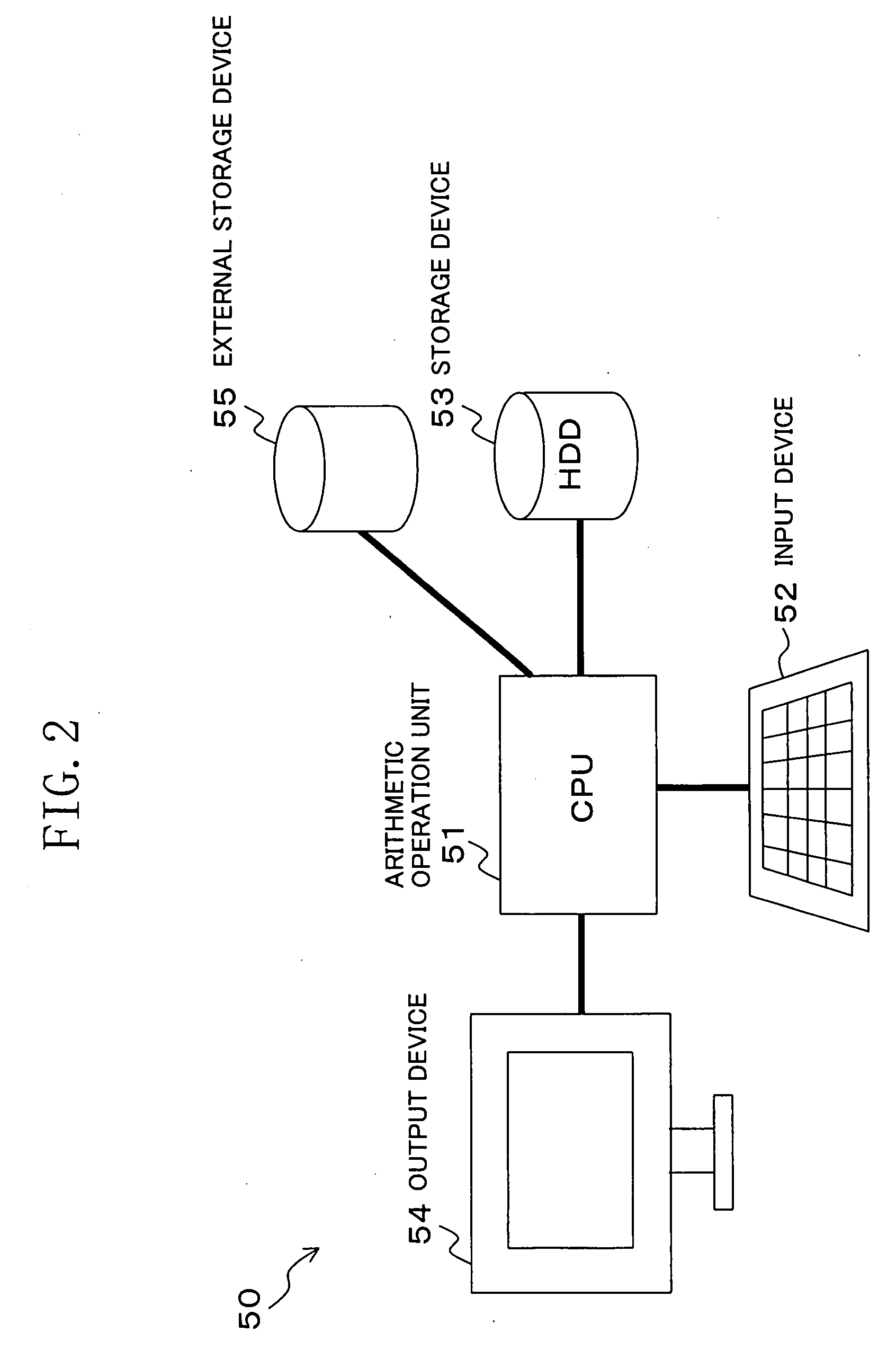Apparatus and method of static timing analysis considering the within-die and die-to-die process variation
a static timing analysis and apparatus technology, applied in the field of semiconductor methods and apparatuses, can solve the problems of increasing manufacturing variation, reducing the yield of semiconductor integrated circuits, and reducing the so as to reduce power consumption and chip area, and calculate quickly and precisely
- Summary
- Abstract
- Description
- Claims
- Application Information
AI Technical Summary
Benefits of technology
Problems solved by technology
Method used
Image
Examples
embodiment 1
[0095]A method and apparatus for designing a semiconductor integrated circuit according to according to a first embodiment of the present invention will now be described with reference to the drawings.
[0096]FIG. 1 is a block diagram showing an apparatus for designing a semiconductor integrated circuit of the present embodiment.
[0097]In FIG. 1, reference numeral 100 denotes a timing analysis device, 1 a path delay information producing section, 2 a correction table producing section, and 3 a statistical path delay producing section.
[0098]The path delay information producing section 1 includes a static timing analysis section 16 for producing path delay information 17 between registers, based on subject circuit information 15 and cell delay information 14, where the subject circuit information 15 represents how different cells are connected to one another and how parasitic elements, such as capacitors and resistors along wires between cells, are connected to one another, and the cell ...
embodiment 2
[0133]A method and apparatus for designing a semiconductor integrated circuit according to a second embodiment of the present invention will now be described with reference to the drawings.
[0134]FIG. 5 is a block diagram showing the apparatus for designing a semiconductor integrated circuit of the present embodiment. In the present embodiment, like elements to those of the first embodiment shown in the block diagram of FIG. 1 will be denoted by like reference numerals and will not be further described below.
[0135]An apparatus 101 for designing a semiconductor integrated circuit of the present embodiment includes a statistical maximum value calculation section 4 and a statistical maximum path delay information 32.
[0136]The operation up to when the statistical path delay information 31 is output is similar to that of the first embodiment and will not be further described below. The statistical maximum value calculation section 4 calculates, for each path, the range of path delay varia...
embodiment 3
[0139]A method and apparatus for designing a semiconductor integrated circuit according to a third embodiment of the present invention will now be described with reference to the drawings.
[0140]FIG. 6 is a block diagram showing the apparatus for designing a semiconductor integrated circuit of the present embodiment. In the present embodiment, like elements to those of the first embodiment shown in the block diagram of FIG. 1 will be denoted by like reference numerals and will not be further described below.
[0141]An apparatus 102 for designing a semiconductor integrated circuit of the present embodiment includes an arrangement and wiring section 41, a timing determination section 42 and a circuit modification section 43.
[0142]The arrangement and wiring section 41 reads out information on how connections are made in the semiconductor integrated circuit, and arranges and wires together cells, to thereby produce the subject circuit information 15. Based on the subject circuit informatio...
PUM
 Login to View More
Login to View More Abstract
Description
Claims
Application Information
 Login to View More
Login to View More - R&D
- Intellectual Property
- Life Sciences
- Materials
- Tech Scout
- Unparalleled Data Quality
- Higher Quality Content
- 60% Fewer Hallucinations
Browse by: Latest US Patents, China's latest patents, Technical Efficacy Thesaurus, Application Domain, Technology Topic, Popular Technical Reports.
© 2025 PatSnap. All rights reserved.Legal|Privacy policy|Modern Slavery Act Transparency Statement|Sitemap|About US| Contact US: help@patsnap.com



